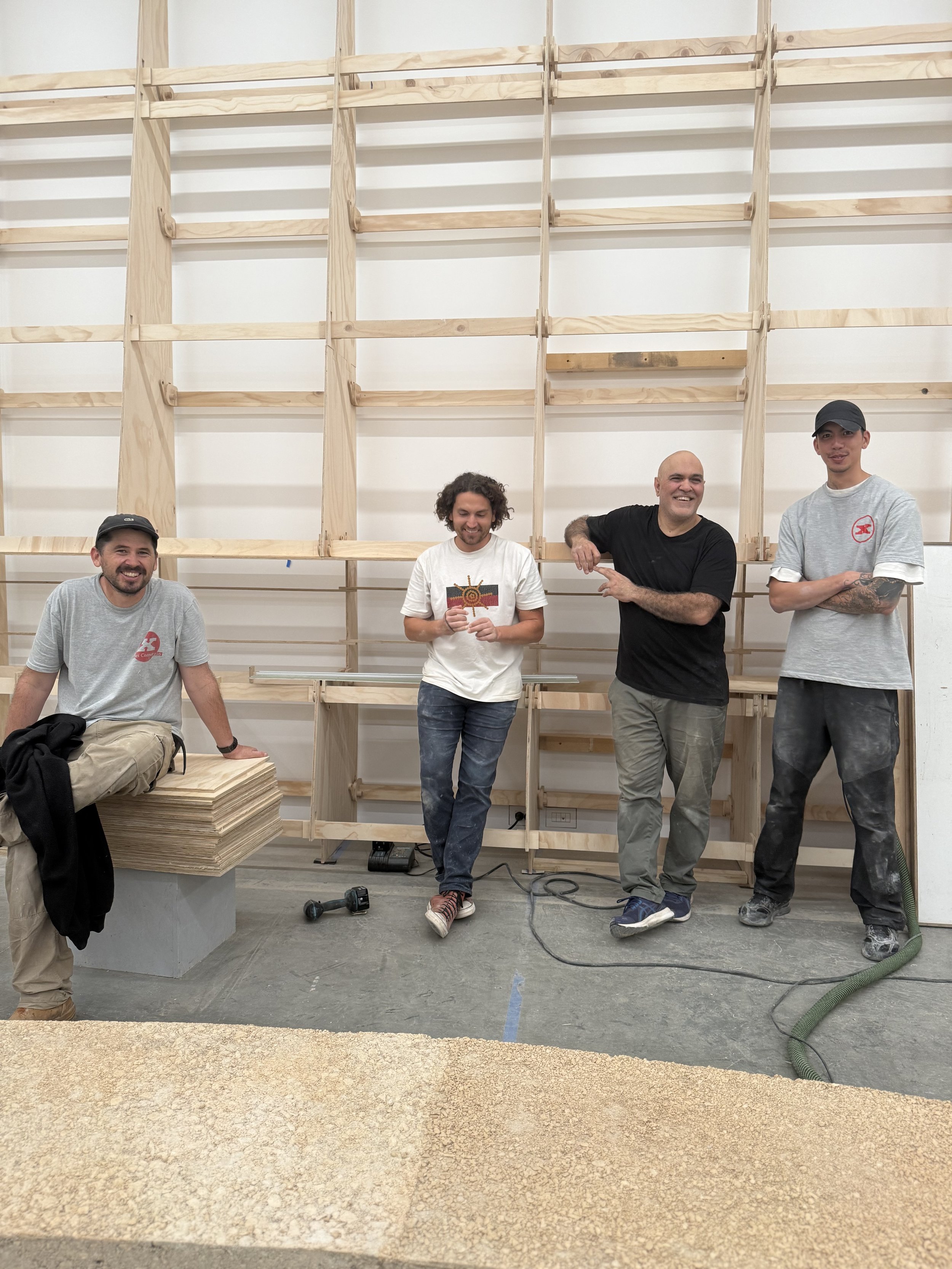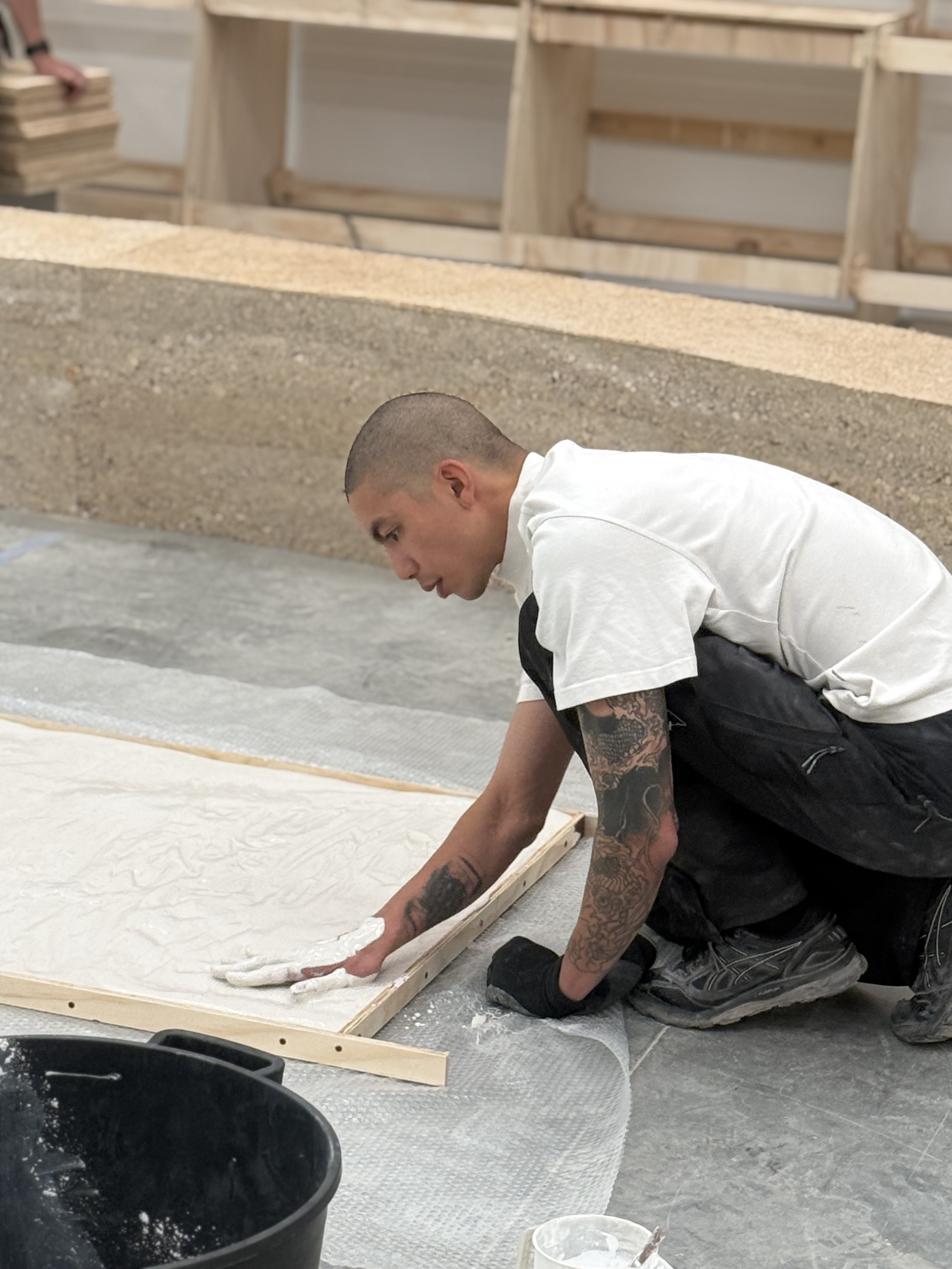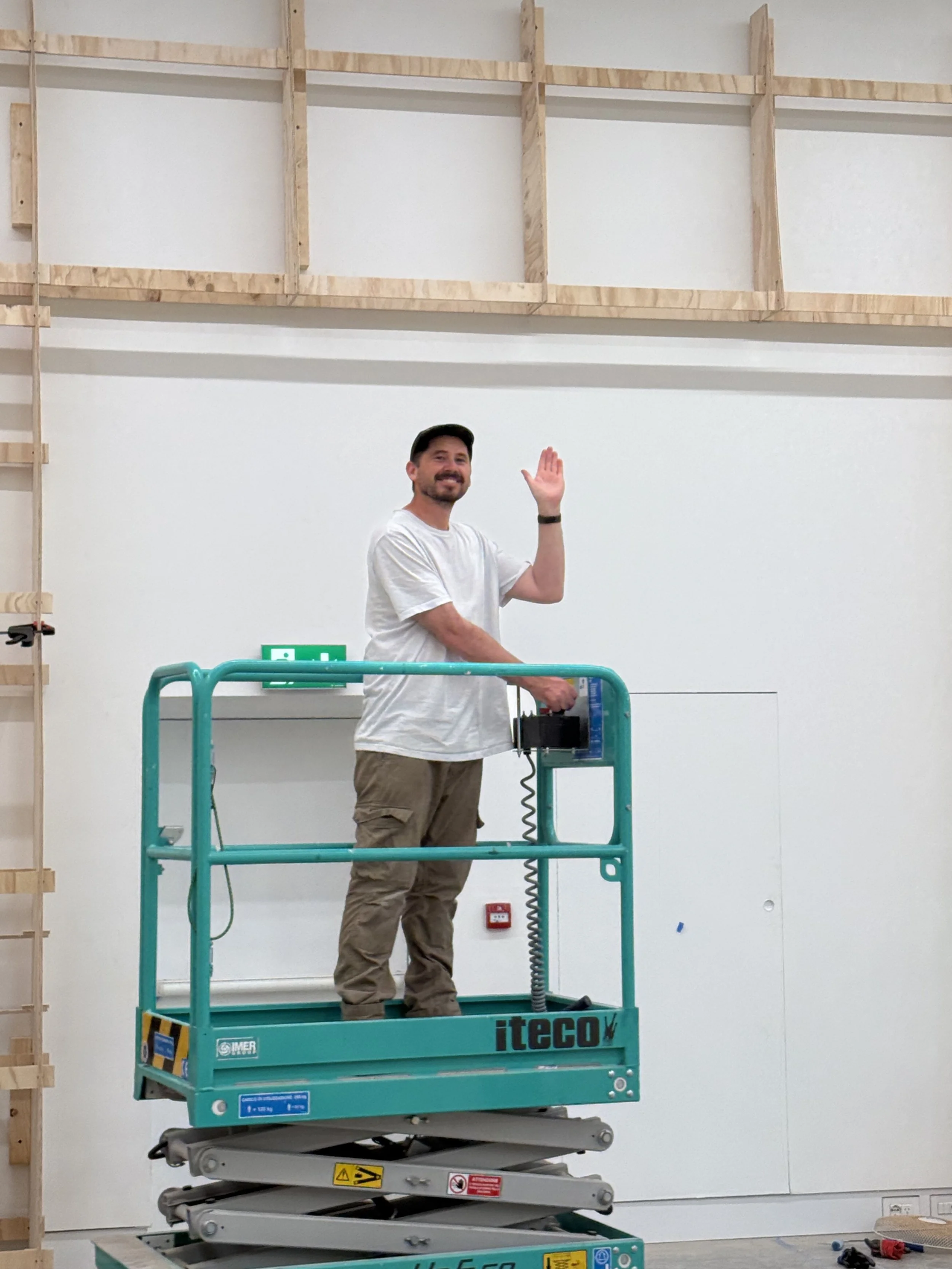STUDENTS REFLECTIONS
This week, the team spent time with several students on the ground at the Australian Pavilion in Venice, engaging in conversations about what home means to them, their contributions to the project, and the living belongings they created as part of their university student intensive that will be displayed within the space.
Among these conversations was one with artist and architecture graduate Kien Situ. Reflecting on his participation in the intensive earlier this year, Kien described the experience as profoundly moving and generative—emotionally, intellectually, and physically. He spoke of the privilege of traveling to Venice, where he immersed himself in the site, contributed to the construction of HOME through plastering and ramming the earth wall, and witnessed the placement of his living belonging within the space.
Kien’s living belonging takes the form of an inverted sphere—or globe—crafted from Chinese Mo ink, gypsum cement, titanium, and incense ash. Together, these materials embody what he calls “multi-dimensional matter.”
For Kien, home is not anchored to a physical location but is instead a state of being—shaped by a sense of destabilisation that connects deeply to his personal origins. It is something he carries with him, wherever he goes.
Daniel Burtt is a carpenter by trade, a site manager, and currently pursuing a Master of Architecture. He reflects on his early contributions to HOME during its initial prototyping phase at the University of Sydney, where he helped translate the team’s ideas into tangible forms and played a key role in shaping the project’s structural integrity.
As one of the first members of the build team on the ground at the Australian Pavilion in Venice, Daniel was instrumental in the installation process. He emphasises the importance of building strong relationships with the local Italian builders, highlighting how mutual understanding and friendship are essential to successful collaboration.
Daniel’s mastery in carpentry was crucial to the structural realisation of the Living Cloak. Much of its construction would not have been possible without his meticulous attention to detail and alignment with the design's precision. He shares a guiding principle: “It’s not much more work to do it right than it is to do it wrong, so just do it right.” Reflecting on the experience, Daniel describes working on HOME as “one of the most rewarding things I have done—to bring life to something I truly believe in, to be part of a beautiful story, and to create something so meaningful and beautiful.”
With his background in hands-on building, Daniel brings a unique perspective to architecture. He believes that every future architect should deeply understand structural integrity and the fundamentals of construction. For him, getting physically involved in the building process is not optional—it continually informs and enriches his practice.
For Daniel, home is found in the rhythms of daily life. It’s this sense of familiarity and continuity that brings him comfort.
Hugo Vos is a Master of Architecture graduate who was involved in both the student intensive and the HOME installation.
He reflects on how the student intensive was a transformative experience, allowing him to see connections between his diverse methods of making—jewellery design, woodworking, and architectural practice. These disciplines, he discovered, could align in harmony to inform the creation of a unified object.
Hugo designed and crafted a piece called the ‘Gadi Urn’, a sensory object for the home that evokes memory and connection through scent. The urn reflects his cultural heritage, bridging his European roots with his sense of place in Sydney, Australia. In the making process, Hugo honored his lineage by incorporating wood-turning techniques, his grandfather was also a wood turner.
During the HOME installation in Venice, Hugo played an active role in experimentation and hands-on construction. He contributed to the assembly of the Living Cloak and helped build the pilewood structural system—engineered with minimal screws and fixings to allow for disassembly and reinstallation in various locations. He also worked extensively with the rammed earth components, which involved significant manual labor—lifting, mixing, and compacting earth entirely by hand. He emphasises that the entire wall was constructed without the use of electrical tools, underscoring the exhibition's focus on craft, labor, and the human touch.
For Hugo, home is rooted in memory—shared moments with loved ones, the smells and sensory experiences that evoke the past, and the deep connection to natural landscapes from childhood and local surroundings.




